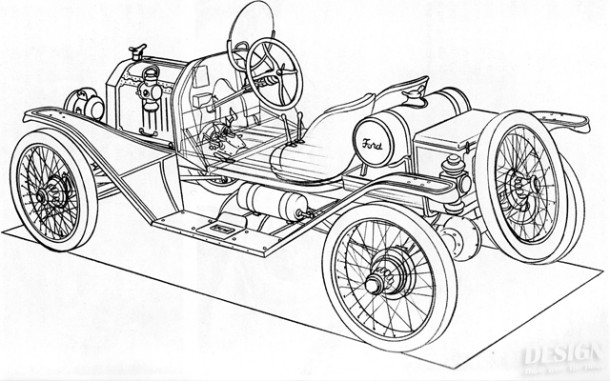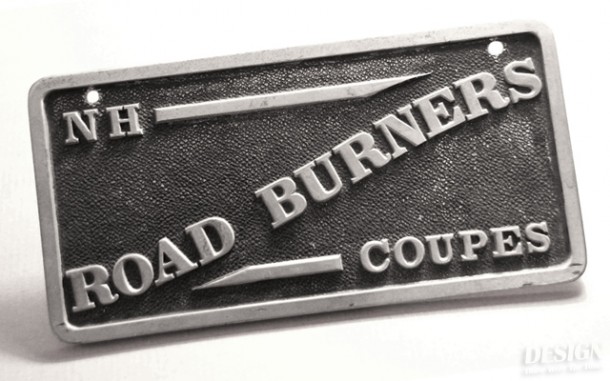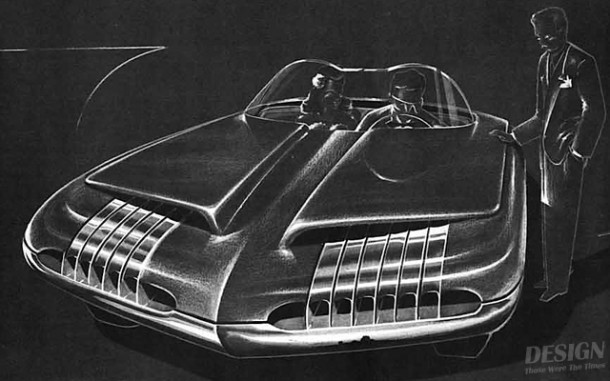Bob Gurr was hired by Walt Disney to design the Autopia. It remains a Disney classic to this very day. We have a special treat today as Disney Legend, Bob Gurr, shares the story of his love for automobiles.
Today’s Wheel of Years has stopped at 1945, and away we go. As WWII was drawing to a close, America’s interest was turning to what would life be like in the upcoming post-war period. After over three years where new cars were no longer made – all the auto plants were building tanks and planes. The Ford Motor Company’s Willow Run Plant in Michigan was turning out big four-engine B-24 bombers at the rate of one every hour, an astounding accomplishment. Soon Ford and others were going to resume auto production. The big excitement – everyone looked forward to the futuristic car designs that were sure to come.
Being a “car kid” from as early as I can remember, I searched the magazines and newspapers for any hint of what’s coming. A lot of art work was shown describing “futuristic” cars. Within a year, I saw my first real post-war car, the Studebaker Starlight Coupe, seen during a photo shoot on my paper route. The next year I saw the Tucker ’48. While I wanted to be an airplane engineer, my math was bad, now I just knew what I was meant to do in life – become an auto stylist! But I was way more interested beyond styling, I had always wanted to know how everything worked, and cars were the most interesting subject. It’s been a lifetime pursuit of learning both design and engineering ever since. See Dean’s Garage for more: http://deansgarage.com/2010/automobile-design-by-henry-gurr/
Most folks today have known that America was built on the Automobile, and our lives are both enriched and irritated by sharing the planet with these infernal but vital mechanisms. Some folks endure them, for others, it’s their main passion. Today’s automotive creations are a genuine technological marvel, just jump in and drive with not much thought of how it all works. That’s today – but I remember yesterday, and also my grandmother’s tales of what driving was like in her day. She was one of the first licensed Southern California women drivers before WWI. She was an adventurous driver, enjoyed traveling all over the state.

Here’s how she started her 1910 Chalmers; grab hold of the radiator cap, jump down on the starting crank. (she weighed 90 pounds, no electric starter yet). Today you just push a button, on a Tesla S the car starts when you’re seated, click a direction and go. You change your oil today in some cars after 10,000 miles, early days was no more than 1,000 miles. Today, not such a thing as a tune up, old cars needed this maybe every 2,000 miles, spark plugs got changed along with a lot of other stuff. Today it’s 100,000. The big thing was engine overhaul – the rings and valves were good for 10,000 miles usually. Today, many cars will go to the junkyard because of weathered old looks and traffic rash with their engines and automatic transmissions still in great shape with way over 200,000 miles.

In 1938 the big news was when Oldsmobile introduced Hydramatic, the first automatic transmission, Chrysler soon followed with their Fluid Drive. Now it was possible to not need to know how to shift gears in order to drive. Of course today what red blooded American would use an automatic instead of showing off their skill shifting a 7-speed while downshifting heel and toe. Three speed floor shift was the norm up to about 1938 when column shift was introduced. The first console shifts showed up in English sports cars around 1948 and are still hot in today’s sports sedans.
Around 1932, syncho-mesh transmissions were invented. Up until then, you had to shift very carefully so as not to “grind the gears”. I thought is was jazzy to clutchless shift my Model A Ford non-syncho. You wait for the gears to match speed, then ease into the next gear. Hot rodders did speed shifts – no clutch at full throttle. Do this right and you “chirp” the rear tires – “hey man, I got second gear rubber”. Done wrong, you’ll see a trail of oil and gear teeth in the rear view mirror. Yep, I dropped my “Z” gears in my ’36 5-window once. We guys always did our own maintenance – high schools back then offered auto shop where you could work on your car while earning class credits. You modern wusses sure are missing the good stuff.

A local gas station would let us boys lift our cars up on the hoist and work underneath all we wanted, just buy your gas and oil from the owner. Don’t even think of going into a car dealer’s shop today to watch them work – hazard insurance! Today’s cars have advanced fuel injection, even direct injection and variable valve timing plus some with dual turbos. Everything is electronic, the whole car controlled by very expensive computer “black boxes”. In our day it was shade tree mechanics, do it yourself for everything. Virtually everything your car needed you could get at an auto parts store, and with minimal tools maintain everything. Naturally, we’d modify and hop up engines for more speed and noise.

Oh yeah, noise was it. You’d just had to have a set of dual steel pack Porters to get that deep Ford V8 rumble. Chevy guys with their stove bolt 6 could set up an exhaust with the loudest over-run rap. Girls noticed this stuff and picked guys for their cars. Of course, cars were where the “action” was. Today you take a date to the 3-D air conditioned surround sound digital video movie house. Long ago it was the drive in film movie privately in your car with the single hang-on sound box. Radio was keen and simple, one knob to change the music, the other knob to make it louder. Cars today can be filled with $50,000 audio systems.

I loved to learn how cars were built by fixing them. I could check out auto repair books from the public library for reference. I’d learn how cars would crumple in a crash when I’d scour the junkyards for spare parts. This was my head start on engineering stress analysis later on when designing Monorails. I rebuilt my 1930 Model A Ford engine in high school, by 1979 I rebuilt the engine in my 1955 Rolls~Royce that I had for 35 years. The last cars I could tinker with was my 1971 Citroen- Maserati and my 1964 Ferrari Lusso. I built a custom motorhome in the early 1970s, but cars became so complex and reliable by then – a fabulous era was ending. But one car stood out from all the others, my friend Dan Post’s 1913 Model T Ford “Bug”. Super easy to drive (no gears), and super cheap and easy to fix. I entered it in a fancy car show in 1954 and won best of show…oops, that’s a whole ‘nother car story.
Jay Leno’s Garage visits Pixar Motorama 2013 featuring Bob’s Autopia MkVII
I can’t be the only one here who loves cars. Tell me your classic car stories below.




You must be logged in to post a comment.